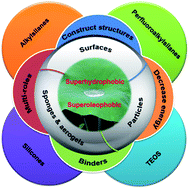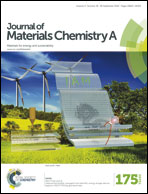Roles of silanes and silicones in forming superhydrophobic and superoleophobic materials
Abstract
Inspired by the self-cleaning and water-repellent properties of plants and animals in the natural world, superhydrophobic and superoleophobic materials develop quickly, and are of great interest in academic and industrial areas. Although various chemicals have been used, silanes and silicones play very important roles in the preparation of superhydrophobic and superoleophobic materials. Approximately 25% of the literature about superhydrophobic and superoleophobic materials is based on silanes and silicones. Thus, we believe that an exhaustive literature review from the viewpoint of silane and silicone chemistry is now pertinent to give an overview of the recent progress about their roles in the preparation of superhydrophobic and superoleophobic materials. First of all, we hope to overview the roles of silanes and silicones in constructing micro-/nanostructures, decreasing the surface energy and/or as binders for the fabrication of superhydrophobic and superoleophobic surfaces. We will then focus on the roles of silanes and silicones in the formation of superhydrophobic and superoleophobic particles, sponges and aerogels. In the conclusions, we will summarize the roles of silanes and silicones in forming superhydrophobic and superoleophobic materials, and the challenges in the field. Overall, this review will hopefully help readers to use silanes and silicones dexterously in the design of novel superhydrophobic and superoleophobic materials.


 Please wait while we load your content...
Please wait while we load your content...